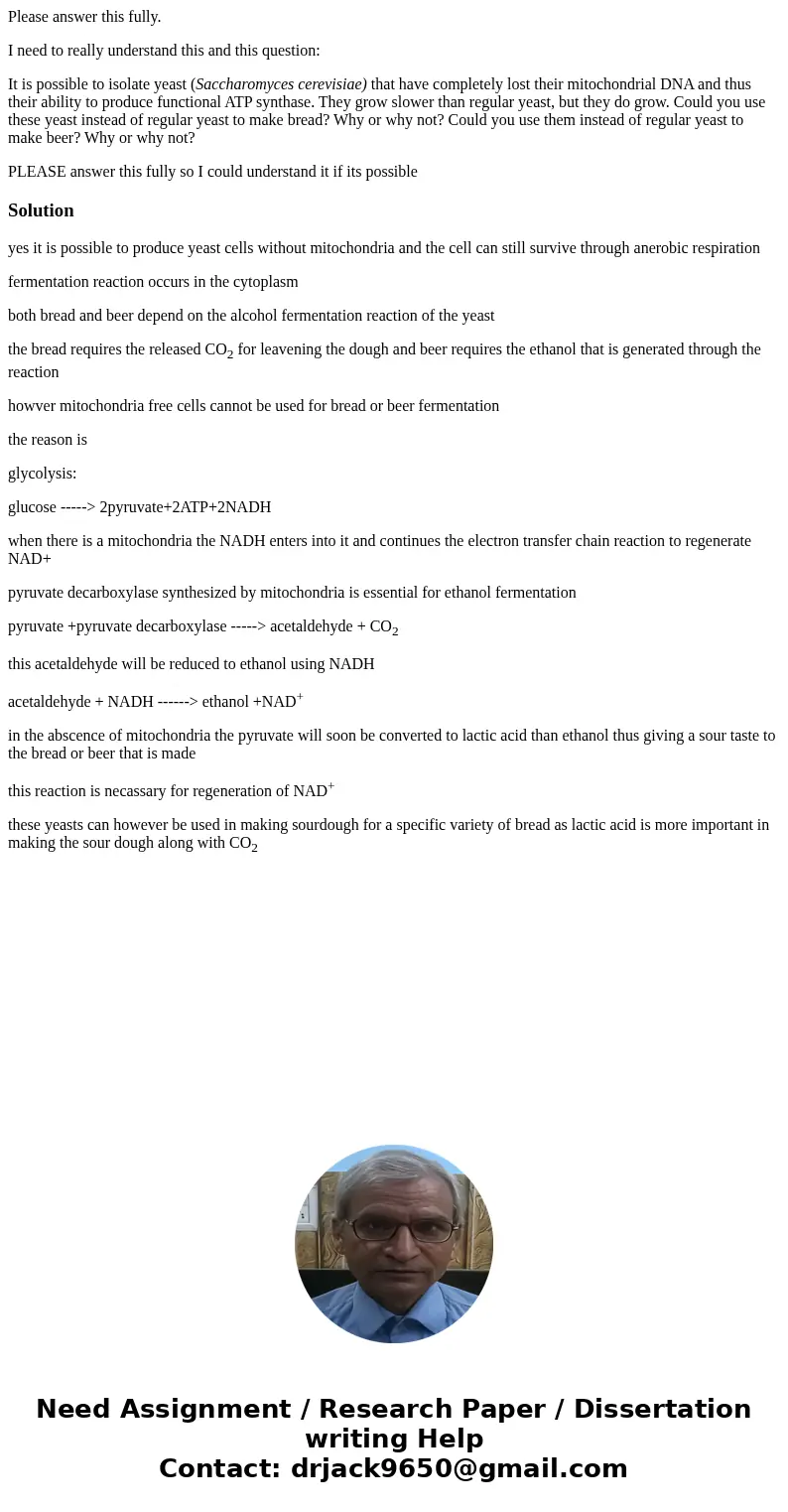Please answer this fully I need to really understand this an
Please answer this fully.
I need to really understand this and this question:
It is possible to isolate yeast (Saccharomyces cerevisiae) that have completely lost their mitochondrial DNA and thus their ability to produce functional ATP synthase. They grow slower than regular yeast, but they do grow. Could you use these yeast instead of regular yeast to make bread? Why or why not? Could you use them instead of regular yeast to make beer? Why or why not?
PLEASE answer this fully so I could understand it if its possible
Solution
yes it is possible to produce yeast cells without mitochondria and the cell can still survive through anerobic respiration
fermentation reaction occurs in the cytoplasm
both bread and beer depend on the alcohol fermentation reaction of the yeast
the bread requires the released CO2 for leavening the dough and beer requires the ethanol that is generated through the reaction
howver mitochondria free cells cannot be used for bread or beer fermentation
the reason is
glycolysis:
glucose -----> 2pyruvate+2ATP+2NADH
when there is a mitochondria the NADH enters into it and continues the electron transfer chain reaction to regenerate NAD+
pyruvate decarboxylase synthesized by mitochondria is essential for ethanol fermentation
pyruvate +pyruvate decarboxylase -----> acetaldehyde + CO2
this acetaldehyde will be reduced to ethanol using NADH
acetaldehyde + NADH ------> ethanol +NAD+
in the abscence of mitochondria the pyruvate will soon be converted to lactic acid than ethanol thus giving a sour taste to the bread or beer that is made
this reaction is necassary for regeneration of NAD+
these yeasts can however be used in making sourdough for a specific variety of bread as lactic acid is more important in making the sour dough along with CO2

 Homework Sourse
Homework Sourse